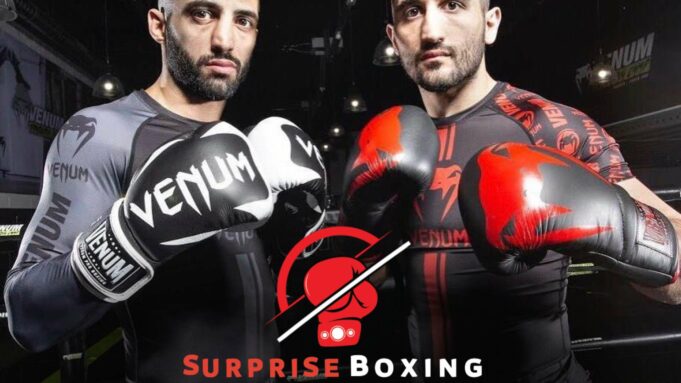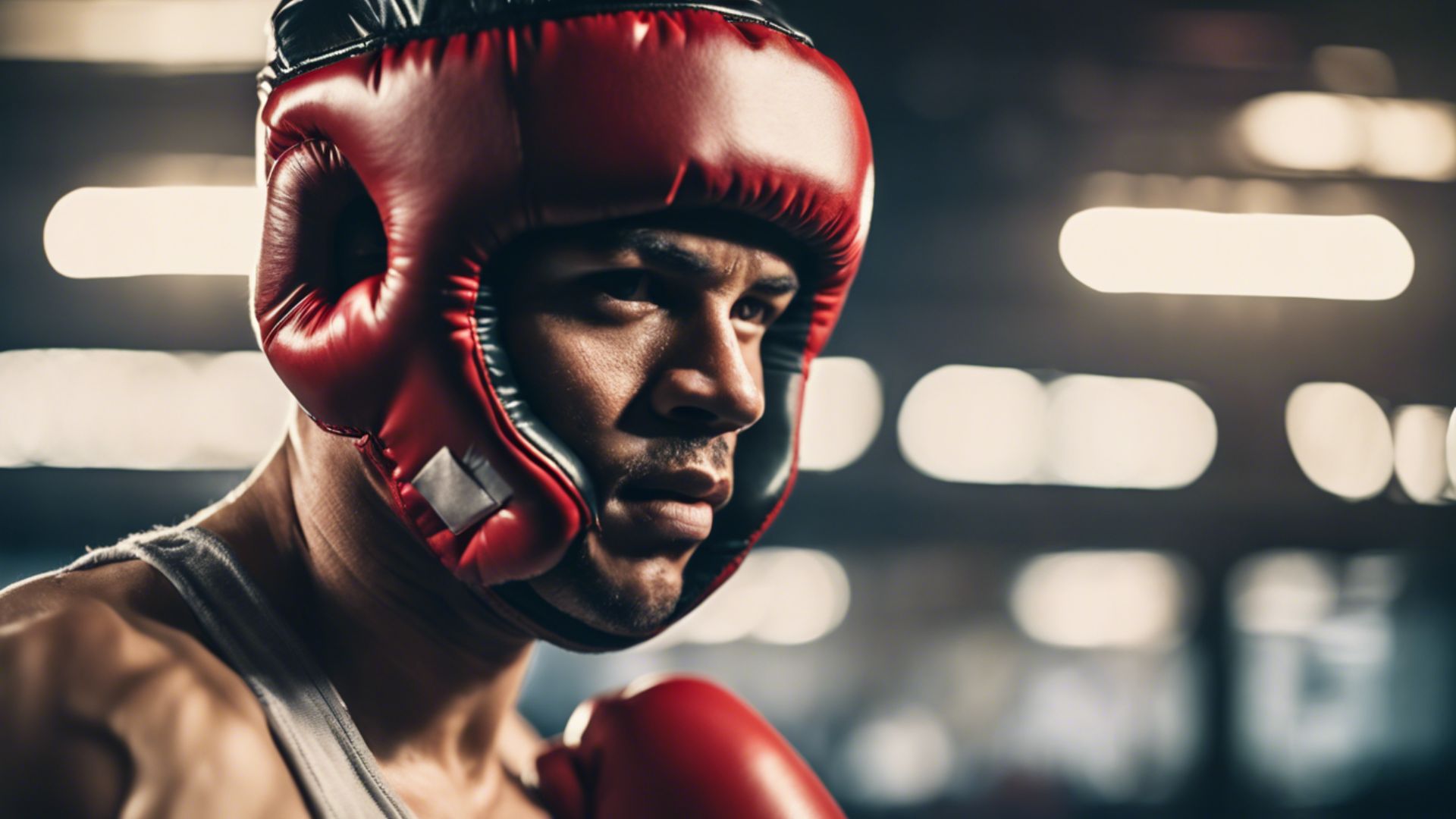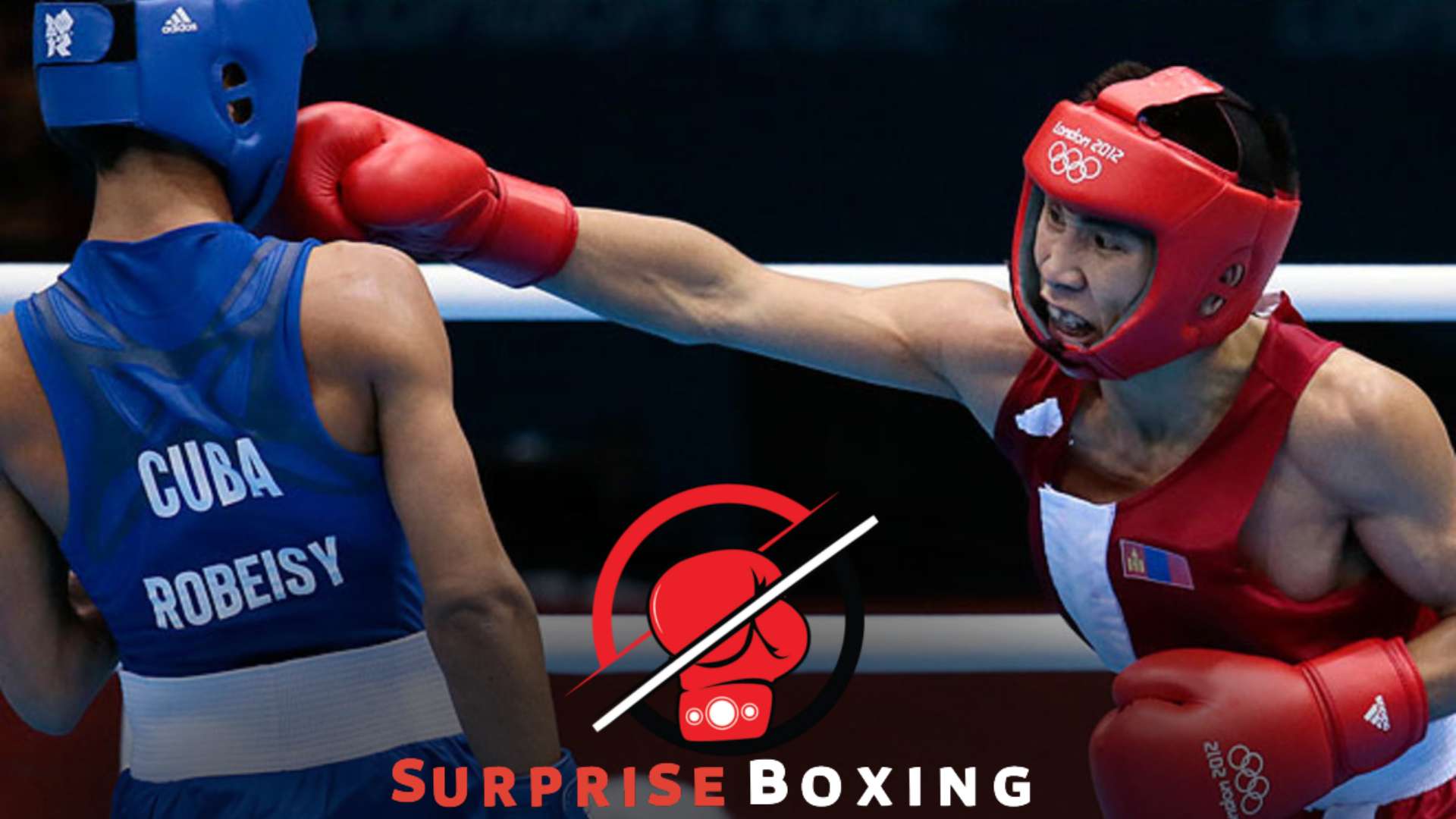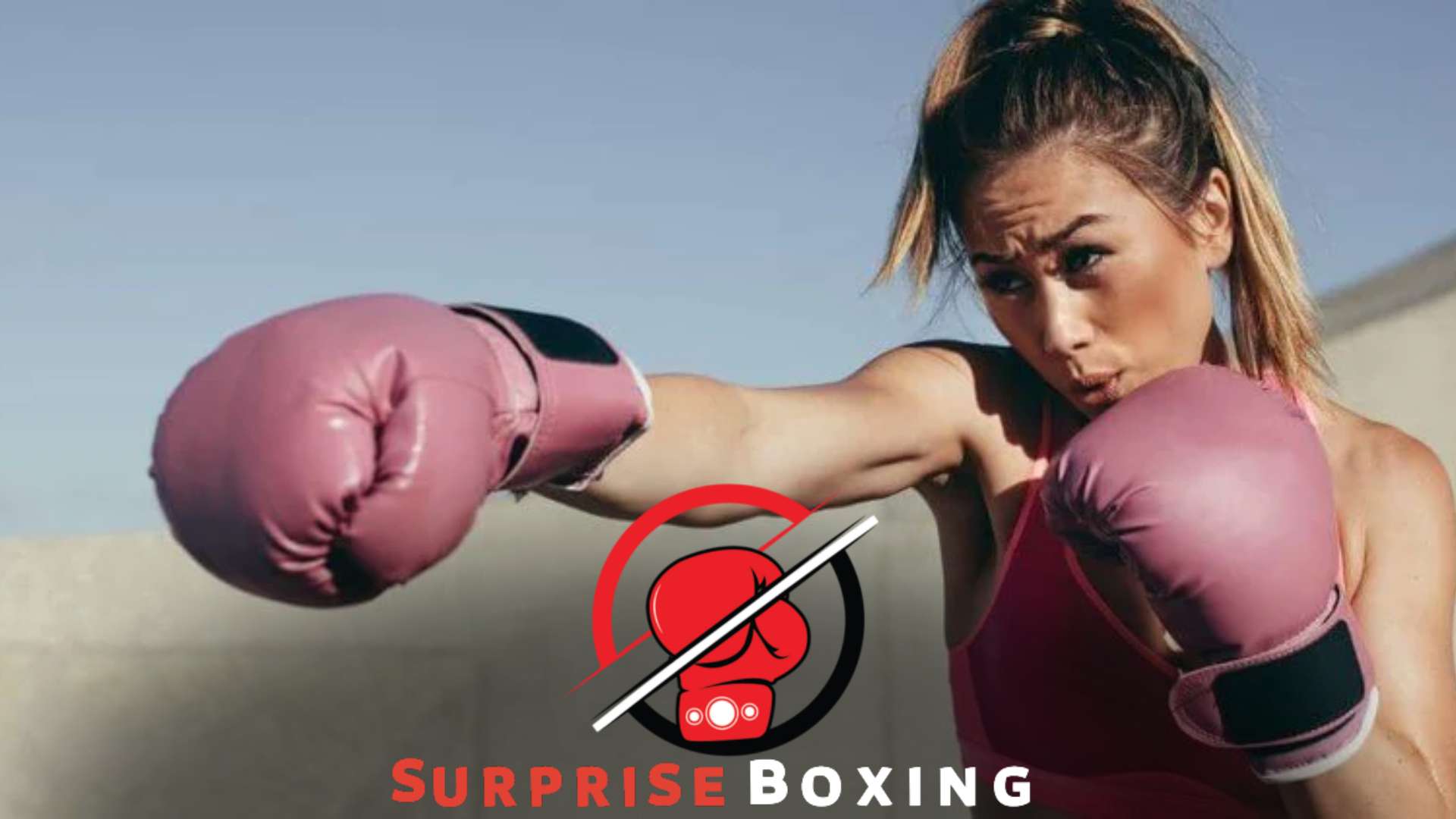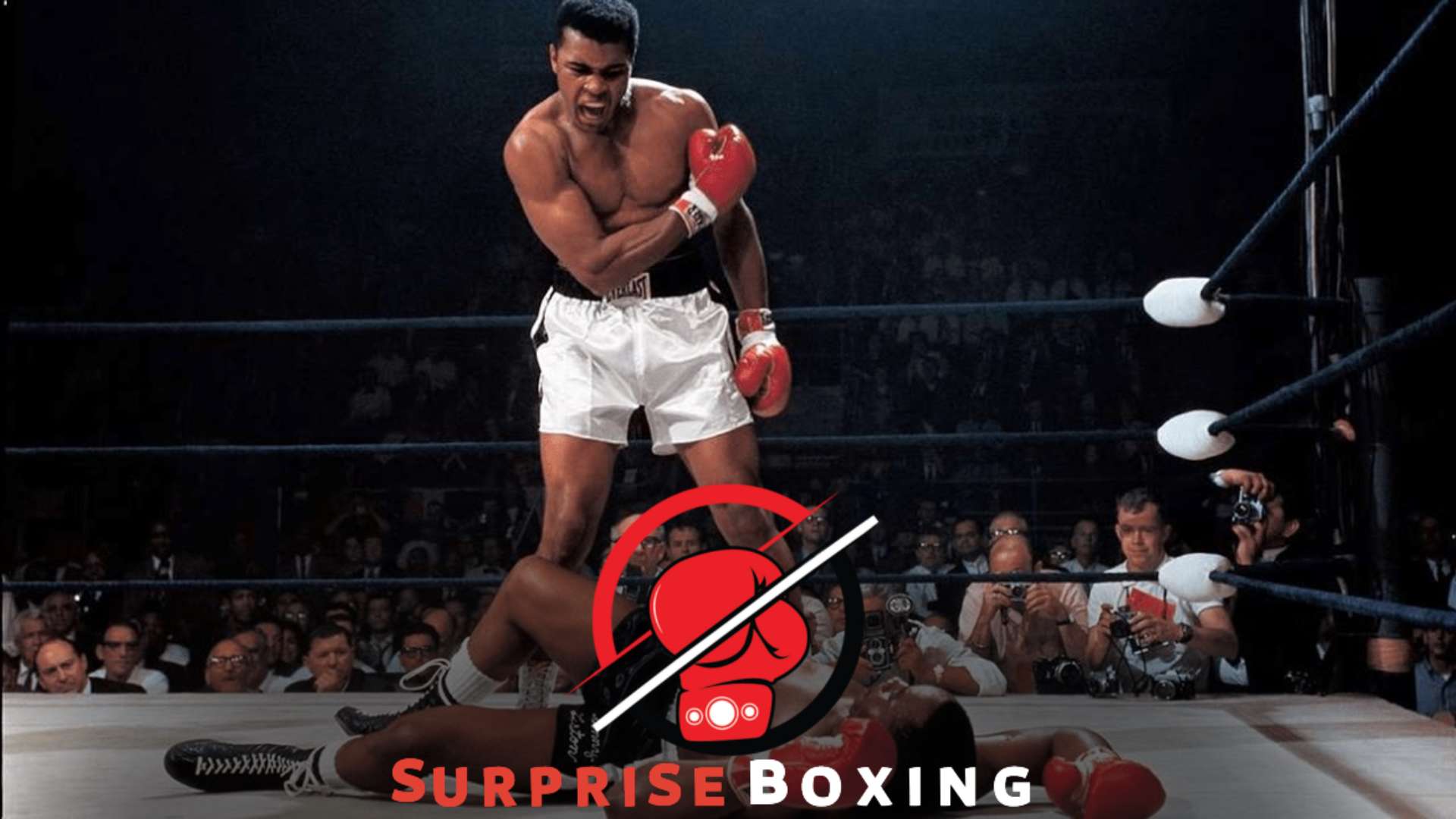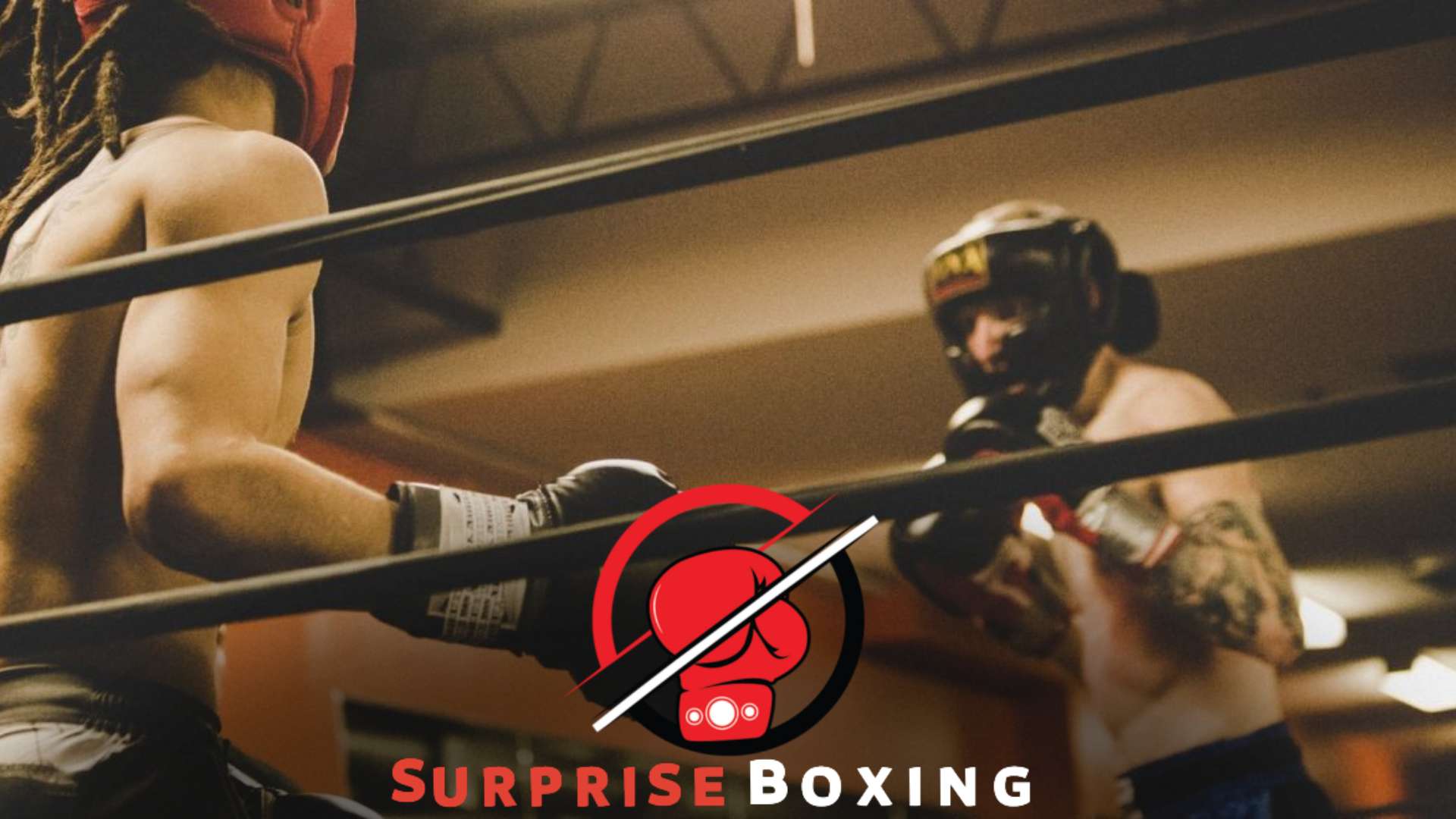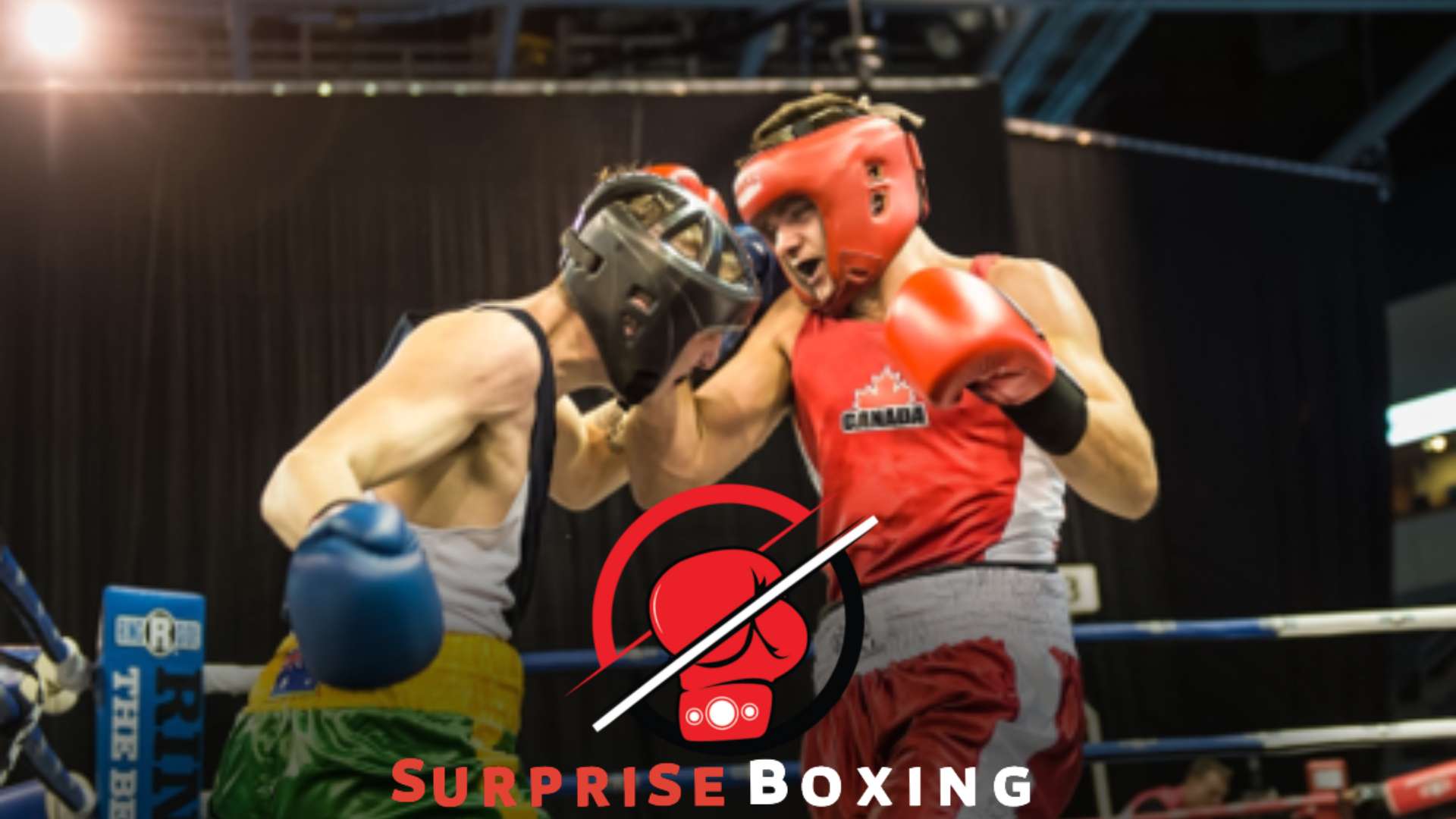The recommended size for boxing headgear is determined by the circumference of the user’s head. To find the right size headgear for boxing, measure the circumference of your head using a measuring tape and refer to the manufacturer’s sizing chart.
Boxing headgear is a crucial protective equipment that helps safeguard boxers from head injuries and concussions during training and sparring sessions. Choosing the right size headgear is essential for ensuring optimal protection and comfort. To find the correct size, accurately measuring your head’s circumference is necessary.
This can be done by using a flexible measuring tape and wrapping it around the widest part of your head, just above the eyebrows and ears. Once you have the measurement, refer to the manufacturer’s sizing chart to select the appropriate size. We will explore the importance of finding the right size headgear for boxing and provide some tips to help you make the right decision.
Understanding Boxing Headgear Sizing: Factors and Guidelines for Choosing the Perfect Fit

Choosing the perfect fitting boxing headgear involves considering factors like head size, circumference, and brand-specific sizing guidelines. Understanding these factors ensures optimal protection and comfort during boxing training and matches.
Boxing headgear is an essential piece of equipment that every boxer should have. It provides crucial protection for the head, reducing the risk of serious injury during training or competition. However, finding the right size headgear can be a bit challenging.
The fit of your headgear plays a significant role in its effectiveness and comfort. We will explore the factors and guidelines for choosing the perfect fit for your boxing headgear.
Factors To Consider for Boxing Headgear Sizing
When determining the right size headgear, certain factors need to be considered. These factors include:
- Head circumference: Measuring the circumference of your head is the first step in choosing the correct headgear size. To measure it accurately, take a cloth measuring tape and wrap it around the widest part of your head, just above the eyebrows. This measurement will serve as a baseline for selecting the appropriate size.
- Brand and model: Different brands and models may have varying sizing charts and dimensions for their headgear. It’s crucial to refer to the specific brand’s sizing guide or recommendations to ensure an accurate fit.
- Weight class: Your weight class can also be a factor in determining the proper headgear size. Most headgear models provide size recommendations based on weight ranges. Matching your weight class with the appropriate size range for optimal protection and fit is essential.
Guidelines for Choosing the Perfect Fit
To choose the perfect fit for your boxing headgear, consider the following guidelines:
- Snug fit: Your headgear should fit snugly on your head without being too tight or too loose. It should provide a secure and comfortable fit, ensuring it stays in place during training or matches.
- Proper coverage: The headgear should provide adequate coverage for the head, including the temples, cheekbones, and the top. Ensure the headgear you choose adequately protects these areas without obstructing your vision.
- Adjustability: Some headgear models have adjustable features like straps or velcro closures. These allow you to customize the fit and ensure a secure and comfortable feel. Opt for headgear with flexible elements for a more personalized fit.
- Try-on: Whenever possible, try different headgear sizes before purchasing. This lets you assess the fit and comfort level firsthand, ensuring the right size for your head shape and size.
- Consultation: If you’re unsure about the right headgear size, seeking advice from experienced trainers or professionals in the boxing industry can be helpful. Their insights and expertise can guide you in choosing the most suitable headgear for your needs.
Finding the right size headgear plays a crucial role in providing optimum protection and comfort during boxing training or matches. By considering factors such as head circumference, brand recommendations, and weight class and following the guidelines for a perfect fit, you can ensure that your boxing headgear fits you securely and effectively.
Measuring Your Head for Boxing Headgear: Step-By-Step Guide To Accurate Sizing for Maximum Safety and Comfort
This step-by-step guide will teach you how to measure your head for boxing headgear accurately. Ensuring the correct size provides maximum safety and comfort during your boxing sessions.
Boxing is a physically demanding sport that requires proper protective gear to ensure safety and comfort for the athletes. One essential piece of equipment is the boxing headgear. It is crucial to find the right headgear size as it directly impacts safety and performance.
This guide will walk you through the step-by-step process of accurately measuring your head for boxing headgear. Following these instructions, you can determine the perfect size that provides maximum protection and comfort for your boxing sessions.
To find the ideal size headgear for boxing, follow these steps:
- Get a soft measuring tape: Acquire a soft one, preferably a flexible tailor’s tape, to ensure accurate measurements.
- Wrap the tape around the head: Gently wrap the measuring tape around your head, positioning it just above your eyebrows and ears. Ensure the video lies snugly against your skull without being too tight or loose.
- Take the measurement: Note the circumference of your head in centimeters or inches, depending on the measuring tape you are using. This measurement will serve as the basis for determining the appropriate headgear size.
- Refer to the manufacturer’s size chart: Different boxing headgear brands may have their size charts. Consult the manufacturer’s website or product packaging to find the size chart specific to the brand of headgear you are interested in.
- Match your head circumference: Using the head circumference measurement you obtained, locate the corresponding size on the manufacturer’s size chart. Each length will have a range of head circumferences associated with it. Choose the size that falls within your measured circumference for the best fit.
- Consider personal preferences: While the size chart provides a general guideline, personal preferences also play a role in selecting the right headgear size. Some individuals prefer a snug fit, while others prefer a looser fit. Consider your comfort level and the purpose of use (sparring, training, or competition) when making the final decision.
- Try it on. Once you have determined the appropriate size based on the measurement and personal preferences, try on the headgear. Ensure it fits securely and covers the necessary areas, such as the head’s temples, cheeks, and back.
- Check for movement: Move your head in different directions to test the stability and mobility of the headgear. It should stay in place without obstructing your vision or causing discomfort.
- Seek professional advice if needed: If you are unsure about the measurements or finding the right size, consult a boxing trainer, equipment specialist, or experienced boxer who can provide valuable guidance.
- Replace worn-out or ill-fitting headgear: Regularly inspect your headgear for signs of wear and tear. Replace any damaged headgear that no longer fits properly to maintain optimal safety and performance.
Following these steps ensures that your boxing headgear fits correctly, providing the necessary protection and comfort during training sessions or competitions. Don’t compromise on safety – invest time finding the right size headgear to enhance your boxing experience.
Determining the Right Size Boxing Headgear: A Step-By-Step Guide To Finding the Perfect Fit for Maximum Safety and Performance
Find the perfect size headgear for boxing with this step-by-step guide, ensuring maximum safety and optimal performance in the ring.
Boxing headgear is an essential piece of protective equipment that every fighter needs. Not only does it provide cushioning and protection for the head, but it also plays a crucial role in ensuring maximum safety and performance in the ring.
However, finding the right fit can be overwhelming with various sizes available. Don’t worry! This step-by-step guide will help you determine the perfect size boxing headgear for your needs.
Step 1: Measure Your Head Circumference
The first step in finding the right headgear size is accurately measuring your head circumference. You can take a flexible tape measure and wrap it around the widest part of your head, just above your eyebrows and ears. Make sure the tape measure is snug but not too tight.
Step 2: Refer To Size Charts
Once you have your head circumference measurement, refer to the size chart provided by the manufacturer or the seller. Different brands may have sizing standards, so checking their specific guidelines is crucial. Most size charts list the head circumference range for each size, making it easier to determine which size would best fit you.
Step 3: Consider Your Weight Category
In addition to head circumference, it’s also important to consider your weight category when choosing the right size boxing headgear. Different sizes may be recommended for other weight classes. This is because headgear must provide adequate protection while allowing unrestricted movement.
Refer to the manufacturer’s recommendations or consult with an experienced trainer to ensure you select the appropriate size based on your weight class.
Step 4: Try it on and Assess the Fit
Once you have narrowed down the options based on head circumference and weight category, it’s time to try on the headgear. Put it on and fasten the straps securely. The headgear should fit snugly without being too tight or too loose.
Here are a few things to consider when assessing the fit:
- The headgear should cover your forehead, temples, and the back of your head.
- The cheek protectors should sit comfortably and not obstruct your vision.
- The chin strap should fasten securely without causing discomfort.
Step 5: Test Mobility and Comfort
While a snug fit is crucial, it’s equally important to test the mobility and comfort of the headgear. Move your head from side to side, up and down, and rotate it in all directions. Ensure that the headgear doesn’t impede your movement or restrict your vision.
It should also feel comfortable on your head, without any pressure points or discomfort.
Step 6: Consider Future Adjustments
Keep in mind that headgear may slightly loosen over time due to usage. Therefore, choosing a size that allows for some adjustment is wise. Some headgear models have additional padding or adjustable straps to help you achieve a more customized fit.
These features can be particularly beneficial if you’re still growing or anticipate weight changes.
Finding the right size boxing headgear is crucial for safety and performance. Follow this step-by-step guide, consult sizing charts, and consider your weight category to ensure you choose the perfect fit. It’s always better to opt for a snug yet comfortable fit that provides adequate protection without compromising your mobility in the ring.
Importance of Properly Fitted Boxing Headgear: Safeguarding Your Well-Being and Enhancing Performance
Properly fitting boxing headgear is crucial for both safety and performance enhancement in the ring. Find the right size headgear to ensure your well-being during intense bouts.
Boxing is a physically demanding sport that requires athletes to protect themselves while maximizing their performance. One crucial equipment that every boxer should invest in is properly fitted headgear. Ensuring your headgear fits correctly can significantly impact your overall well-being and athletic abilities.
Let’s take a closer look at why properly fitted boxing headgear is so essential:
Protection From Impact: Preventing Injuries
- Properly fitted headgear absorbs and disperses the force of punches, protecting your head and minimizing the risk of concussions, cuts, and other head injuries.
- Well-fitted headgear covers the forehead, temples, cheeks, and chin, protecting these vulnerable areas from direct hits.
- A secure fit prevents headgear from shifting or sliding during training or matches, reducing the chances of accidental injuries.
Enhanced Vision and Focus: Unobstructed Performance
- When your headgear fits well, it offers maximum visibility, allowing you to see your opponent’s movements clearly and react accordingly.
- Properly fitted headgear sits snugly on your head without obstructing your peripheral vision, enabling you to monitor your surroundings and anticipate your opponent’s actions constantly.
- An unobstructed vision and improved focus can enhance your overall performance, giving you a competitive edge in the ring.
Comfortable and Secure Fit: Confidence Booster
- Well-fitted headgear provides a comfortable and secure fit, eliminating distractions during training or matches.
- When your headgear feels comfortable, you can entirely focus on your techniques, footwork, and strategy, boosting your confidence and mental toughness.
- With a secure fit, you can move confidently, knowing that your headgear stays in place, reducing the risk of accidental slips or dislodgments.
Proper Ventilation: Staying Cool and Preventing Overheating
- Good-quality headgear is designed with ventilation channels and breathable materials that allow air to circulate, preventing overheating.
- Proper ventilation helps regulate body temperature, minimizing discomfort and fatigue during extended training or intense matches.
- Keeping your head cool and adequately fitted headgear allows you to maintain your performance and endurance for extended periods.
Finding the Right Size: Ensuring a Proper Fit
- To find the right size headgear, measure the circumference of your head by wrapping a soft measuring tape around your forehead just above the eyebrows.
- Different brands may have slightly different sizing charts, so always refer to the specific manufacturer’s guidelines for accurate measurements.
- Try on multiple sizes and brands to ensure the best fit, considering factors such as comfort, stability, and the level of protection provided.
Properly fitted boxing headgear is essential for your safety and performance in the ring. It offers protection against impact, enhances vision and focus, provides a comfortable and secure fit, and ensures proper ventilation. By prioritizing the correct fit, you can safeguard your well-being, boost your confidence, and optimize your boxing skills.
Investing in high-quality and properly fitted headgear is crucial to being a responsible and successful boxer.
Types of Boxing Headgear: Exploring the Various Styles and Features for Enhanced Protection and Performance
Discover the ideal size of boxing headgear for enhanced protection and performance. Explore the various styles and features of headgear to find the perfect fit for your boxing needs.
Boxing headgear is essential protective gear for any boxer, providing enhanced protection and performance during training and sparring sessions. With various styles and features available, choosing the right size headgear becomes crucial to ensure optimal comfort and safety.
Let’s dive into the different types of boxing headgear and explore their unique characteristics:
Full-Face Headgear: Full Protection and Visibility
- Full-face headgear covers the entire face, protecting the boxer from punches and preventing facial injuries.
- This type of headgear usually features a transparent shield, allowing excellent visibility without compromising safety.
- The padding in the full-face headgear absorbs impact and disperses it evenly for added protection.
Open-Face Headgear: Total Head Coverage With Unobstructed Vision
- Open-face headgear provides total head coverage while exposing the face for better visibility and air circulation.
- The padding in the open-face headgear is strategically placed to protect the temples, forehead, and back of the head.
- Boxers who rely on peripheral vision and quick reflexes prefer this type of headgear.
Cheek Protection Headgear: Enhanced Protection for Sensitive Areas
- Cheek protection headgear is explicitly designed to protect the cheeks and cheekbones vulnerable to injuries.
- The reinforced padding around the cheek area provides additional cushioning and absorbs impact effectively.
- This headgear style is ideal for boxers who want extra protection for sensitive facial areas.
Full Coverage Vs. Lightweight Headgear: Balancing Protection and Mobility
- Full coverage headgear offers maximum protection with its extensive padding, ensuring minimal impact reaches the head.
- Lightweight headgear, on the other hand, prioritizes mobility and agility, allowing boxers to move swiftly without feeling weighed down.
- Consider your boxing style, and training needs to determine whether full coverage or lightweight headgear suits you best.
Adjustable Headgear: Achieving the Perfect Fit
- Adjustable headgear has straps or laces that allow you to customize the fit according to your head size and shape.
- This type of headgear ensures a snug and secure fit, preventing it from shifting or becoming loose during intense training sessions.
- Adjustable headgear is particularly useful if you share your headgear with other boxers or experience size fluctuations.
Choosing the right size headgear is crucial for optimal protection and performance in boxing. Explore the styles and features available, such as full-face, open-face, cheek protection, full coverage, lightweight, and adjustable headgear. Each type offers unique advantages, so consider your preferences, boxing style, and training needs to find the perfect headgear that guarantees comfort, safety, and enhanced performance.
Stay protected, and keep honing your boxing skills!
Best Practices for Trying and Testing Boxing Headgear: Ensuring the Perfect Fit, Comfort, and Protection
Boxing headgear sizing is crucial for ensuring comfort and protection. Follow these best practices to find the perfect fit and enhance your boxing experience.
If you’re an aspiring boxer or even a seasoned one, you understand the importance of selecting the proper headgear for optimal protection in the ring. But how do you ensure the perfect fit, comfort, and safety when choosing the right size headgear for boxing?
Let’s explore some best practices to help you make the right decision:
Understanding Headgear Sizing
- Measure your head circumference: Using a soft measuring tape, wrap it around the widest part of your head, approximately one inch above your eyebrows. Make sure the video is snug but not too tight. This measurement will help you determine your headgear size.
- Refer to the manufacturer’s sizing chart: Different manufacturers may have slightly different sizing guidelines for their headgear. Look for their sizing chart and find the corresponding size based on your head circumference measurement.
- Consider the purpose of the headgear: Different headgear models serve different purposes. Some are designed for full-contact sparring, while others are more suitable for light training sessions. The intended use can affect the size and fit you should choose.
- Try the headgear on if possible: If you can, try it before purchasing it. This will allow you to assess the fit and make necessary adjustments. Ensure it sits comfortably on your head, providing adequate coverage and not obstructing your vision.
Ensuring Comfort and Protection
- Proper padding distribution: The headgear should have sufficient padding to reduce the impact of punches and protect critical areas, such as the temples, jawline, and cheeks. Ensure that the padding is evenly distributed, providing balanced protection across your head.
- Chin strap and velcro closure: A secure fit is essential to prevent the headgear from shifting during training or sparring sessions. Look for headgear that features a chin strap and velcro closure system. This will allow you to adjust the fit and secure the headgear firmly.
- Ventilation and breathability: Boxing can be intense, and you’ll want headgear that offers good ventilation to prevent excessive sweating and discomfort. Look for headgear with breathable materials and ventilation holes to keep you cool and focused during training.
- Check for safety certifications: Before making a purchase, check if the headgear has been tested and certified for safety. Look for certificates from reputable organizations, as they ensure that the headgear meets specific safety standards.
By following these best practices for trying and testing boxing headgear, you’ll find the perfect fit that offers comfort and optimal protection. Remember, the proper headgear can make all the difference in keeping you safe and confident in the boxing ring.
So take your time, research, and prioritize your safety.
Factors To Consider Beyond Size When Choosing Boxing Headgear: Material, Padding, Ventilation, Closure Systems, and Additional Features
When choosing boxing headgear, it’s essential to look beyond just size. Consider material, padding, ventilation, closure systems, and additional features to ensure optimal protection and comfort during training or competition.
Factors To Consider Beyond Size When Choosing Boxing Headgear
Size is not the only factor you should consider when choosing boxing headgear. Several other essential elements must be regarded as to ensure the proper headgear provides optimal protection and comfort during training sessions or matches.
These factors include the material, padding, ventilation, closure systems, and additional features of the headgear.
Material
- High-quality leather: Provides durability and excellent protection against impacts.
- Synthetic leather: Offers a more affordable option without compromising on durability.
- Vinyl: Another affordable option but may not be as durable as leather or synthetic leather.
Padding
- Dense foam padding: Provides excellent shock absorption and protection for your head.
- Gel padding: Offers enhanced impact resistance and disperses the force of punches.
- Multi-layered padding: Provides additional protection and reduces the risk of injuries.
Ventilation
- Breathable mesh panels: Promote air circulation and prevent excessive sweating.
- Strategically placed vents: Allow heat to escape and cool your head during intense workouts.
- Moisture-wicking lining: Absorbs sweat and helps keep your head dry and comfortable.
Closure Systems
- Hook-and-loop closures: Offer a secure and adjustable fit, making it easy to put on and take off headgear.
- Buckle closures: Provide a firm and customizable fit, ensuring the headgear stays in place during training.
- Lace-up closures: Offer a traditional and snug fit but may require assistance to put on and adjust appropriately.
Additional Features
- Cheek protectors: Provide extra protection for the cheeks and reduce the risk of facial injuries.
- Chin straps: Ensure the headgear stays securely in place, especially during intense sparring sessions.
- Adjustable sizing: Allows for a personalized fit and accommodates different head sizes.
Considering these factors alongside the size, you can make an informed decision when choosing the proper boxing headgear. Remember to prioritize comfort, protection, and durability to optimize your training experience and keep yourself safe in the ring. Stay confident and focused with the suitable headgear on your side.
Caring for Your Boxing Headgear: Maintenance and Storage Tips To Prolong Performance and Safety
Choosing the right size headgear for boxing is crucial for comfort and safety during training. Properly maintaining and storing your boxing headgear can help prolong its performance and ensure ongoing protection for your workouts. Follow these tips to keep your headgear in excellent condition for years.
Taking proper care of your boxing headgear is essential for maintaining its performance and ensuring safety during training or bouts. Proper maintenance and storage can significantly prolong the lifespan of your headgear, keeping it in optimal condition.
Here are some essential tips to help you care for your boxing headgear effectively:
Cleaning Your Boxing Headgear
Keeping your boxing headgear clean is crucial to prevent the buildup of sweat, odor, and bacteria. Follow these cleaning tips to ensure your headgear stays fresh and hygienic:
- Rinse with water: After each training session or bout, gently rinse your headgear with clean water to remove sweat or debris.
- Use mild soap: Once a week, mix a small amount of mild soap with water and use a soft cloth or sponge to clean the inside and outside of your headgear. Avoid scrubbing too vigorously, as it may damage the material.
- Air dry: After cleaning, allow your headgear to air dry completely before storing it. Avoid direct heat sources such as hairdryers or heaters, as this can cause deformation.
Storing Your Boxing Headgear
Proper storage is essential to maintain the shape and integrity of your headgear. Follow these guidelines for safe and efficient headgear storage:
- Avoid damp or humid areas: Choose a dry and well-ventilated storage space to prevent mold or mildew growth on your headgear.
- Avoid direct sunlight: Prolonged exposure to sunlight can cause the material to fade and deteriorate. Store your headgear in a shaded area or use a headgear storage bag.
- Use a headgear bag or case: Consider investing in a headgear bag or case to protect your headgear from dust, dirt, and damage during transportation or storage.
- Avoid stacking heavy objects: Do not place heavy items on your headgear, as it can deform the shape and reduce its protective capabilities.
- Store in the correct position: Always store your headgear with the front facing up to maintain its shape and prevent unnecessary stress on the straps or padding.
By following these simple maintenance and storage tips, you can significantly prolong the lifespan of your boxing headgear while ensuring maximum performance and safety. Remember, regular cleaning and proper storage are vital to keeping your headgear in top-notch condition, allowing you to focus on your training without any worries about comfort or protection.

Frequently Asked Questions of What Size Headgear for Boxing
What Size Headgear Should I Choose for Boxing?
The circumference of your head should determine headgear size. Measure it using a cloth tape measure or a string, then compare the measurement to the size chart provided by the manufacturer. Getting the right size for optimal protection and comfort during training and fights.
How Do I Measure My Head for Boxing Headgear?
To measure your head for boxing headgear, place a tape measure around the widest part of your head, slightly above your ears and eyebrows. Make sure the tape measure is snug but not too tight. Take note of the measurement in inches or centimeters, and refer to the size chart provided by the manufacturer when choosing your headgear.
What If My Head Size Is Between Two Sizes on the Size Chart?
If your head size falls between two measures on the size chart, choosing the larger size is generally recommended for better comfort. Headgear that is too tight can cause discomfort and restrict movement, while headgear that is too loose may not provide adequate protection.
However, it’s always best to try on the headgear to ensure the perfect fit.
Conclusion
To ensure you find the right size headgear for boxing, it’s essential to understand the factors that come into play. Firstly, consider your head circumference and shape, as this will determine the size that provides the best fit and protection.
Additionally, think about the intended use of the headgear – whether it is for training or competition – as this may impact the level of padding and protection needed. Another critical consideration is the brand and model of the headgear, as different manufacturers may have slight variations in sizing.
Finally, it’s always a good idea to try on the headgear before purchasing, if possible, to ensure a comfortable and secure fit. Following these guidelines, you can select a headgear that offers optimal safety and comfort. Properly fitted headgear will provide the necessary protection during your training sessions and bouts, reducing the risk of injury and allowing you to focus on improving your boxing skills.

